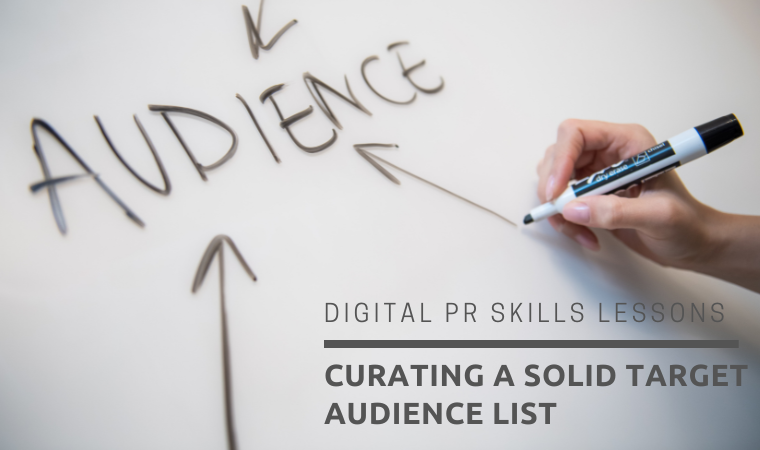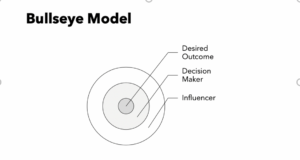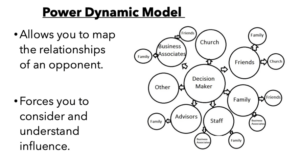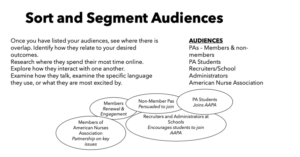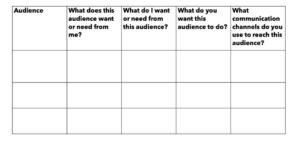Depending on the client, digital public relations can be essential. Social media plays a vital role when working with a brand or company that wants to either build its platform or maintain what they have already started. While at George Washington University, one of my favorite classes was Digital PR Skills, lectured by Professor Alex Dickerson.
When I enrolled in that class, I started learning more about digital campaigns and how to properly execute them as a public relations professional. I realized that digital communications work requires a series of skills that are important in ensuring the work for your clients aligns with their brand. One of the main things discussed in the class that resonated with me was the importance of knowing your audience and adequately mapping them out. Targeting an audience for a specific digital campaign means you must understand what your organization has to offer its consumers or constituents. Poorly identifying your audience can mislead your digital efforts and bring about confusion.
Professor Dickerson did a fantastic job highlighting the key components of building solid digital public relations skills that will contribute to the work you or your agency curates for clients. When mapping out your audience, you need to be specific on what they need, what it is you are offering them, what actions you want your audience to take, and what tactics are more suitable for specific audiences. Below are three models suggested by Professor Dickerson that will help map out an effective audience list.
The Binary Model
Knowing who you want to engage with on social media when launching a digital campaign is just as important as knowing who would be combative or opposing. This model serves as an excellent formula for this very reason. Preparing for the opposition will help build a successful strategy when catering to an audience. Here is how Professor Dickerson says you can do this:
It would be best to start by creating a list of influencers or prominent organizations that you think you would work with on your digital campaign, as well as those against the cause you are championing.
It is good to understand the kind of engagement the influencers and organizations receive, so noting how many followers they have will be a critical component of your digital campaign strategy.
Next, you should plot your allies and opponents on a diagram of two large triangles with allies on one side and opponents on another. You can also do this in a PowerPoint slide.
Now, when it comes to this model, there is a broader view of the audience you are seeking to reach through your digital campaign strategy:
For this method, you would start by creating a list of your digital campaign’s goals (Professor Dickerson also refers to this as your desired outcomes); that would essentially be the center of your bullseye.
When you’ve figured out your goals, another important piece is your campaign’s decision maker(s). Decision makers in a digital campaign strategy will give you a better sense of how said goals will be achieved; you’d list these people in the middle ring of the bullseye.
Now you’re back to your influencers; who has the power to influence your decision makers? List them in the outer ring of the bullseye.
When you’ve completed these steps, you will have an idea of who your digital partners will be.
Pulled from Professor Dickerson’s Week 3 Lecture Slides
The Power Mapping/Power Dynamic Model
It is now time to start identifying your audience.
You can do this by drawing a circle at the center of a page (you can do this on a Word document or PowerPoint slide as well) and begin describing who or what the audience is. You also want to think about who can influence them. Who can persuade them?
When thinking about influencers, you will want to add them in a separate circle linking to your original circle; your audience.
Here’s the thing, your influencers also have influencers. As you build this method out, you want to consider who can influence your influencers. Like the first two bullets, you’d add them to their circle.
This model is a great way to get creative with your strategy.
Pulled from Professor Dickerson’s Week 3 Lecture Slides
How will your audiences interact with one another? This model will help you with thinking this through. Although it is like the Power Mapping/Power Dynamic Model, this model is all about relationships. You can also use circles to illustrate this.
Pulled from Professor Dickerson’s Week 3 Lecture Slides
With this model, you are just clearly putting everything you have gathered in the previous models on a table. To be clear, you do not have to use every single model; one can be enough to create the Audience Matrix. Professor Dickerson breaks down this model in different columns:
Column A: List your audience, as many as you can (but 5-4 is a great goal!).
Column B: List what your audience wants and needs from you.
Column C: List what you need from your audience.
Column D: What is your SMART goal? If you are not familiar with SMART goals, it is a way to encapsulate what you are looking for from your audience. They should be Specific, Measurable, Actionable, Realistic, and Timely.
Here is the fun part; listing out the ways you will reach out to your audience or, in other words, listing out your communication channels. With this broader approach to audience mapping, you will successfully strategize how to interact with your audience.
Pulled from Professor Dickerson’s Week 3 Lecture Slides
Applying these digital PR skills to your work as a professional working with clients who want to build their social media presence or launch a digital campaign will be beneficial to not only you but also your agency. Using any of these models can make a great impact on how you go about strategizing for your clients.
